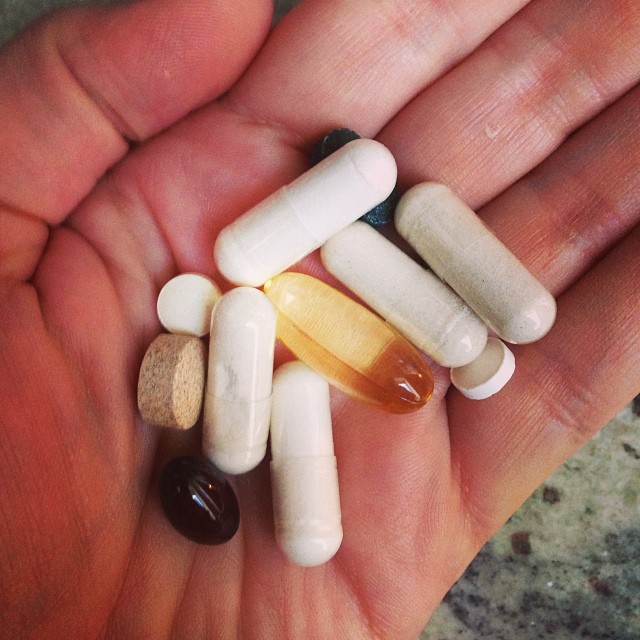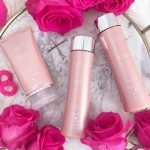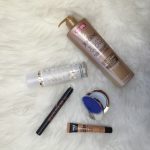My hair is sort of my thing. I don it the way other people do accessories. So I don’t take my supplements in vain, I take them because I’m vain—and because Lady Godiva locks are the goal. Every morning after I eat breakfast, I swallow handful of pills that would rival Valley of the Dolls’ Neely O’Hara’s daily allotment. Except that mine are all designed to make my hair and skin sparkle, [Neely], sparkle.
After testing many combinations, for me, the best hair-growth/thickness hack that makes my hair grow by two inches per month is this: one Viviscal Extra Strength pill (the daily dosage is two), one biotin (7,500 mcg) and one folic acid (400 mcg). To ensure I won’t become immune to their effects, I switch out my regular Viviscal cocktail with supplement stunt-doubles like Nutrafol or Shen Min every few weeks. Meaning so I don’t become immune to the Viviscal’s effects, I will take it for a few weeks and then take the corresponding dosage of either Nutrafol or Shen Min for a week in between. Those are also hair-growth supplements which yield similar effects. I always, however, still take the biotin and folic acid pills daily.
Two years ago, I was only taking Viviscal’s original formulation in its recommended dosage: two pills per day. Since then, a half-dosage (one pill) of Viviscal Extra Strength has become integral to my supplement cocktail. Before incorporating this pill into my daily repertoire, my hair never grew past a few inches beyond my shoulder. Ever. In my entire life. No matter what happened. No matter what I changed in my hippie white-meat- and fish-focused, gluten- and dairy-free diet. Thanks to Viviscal’s aminomar marine complex, in addition to a blend of vitamin c, niacin and biotin, my hair’s grown much longer, glossier and thicker. Viviscal does, however, make my roots a bit oily when I take the full dosage and I’ve also noticed my hair everywhere growing faster. In the case of my suddenly robust eyebrows, this news is well received. Until Viviscal, they were living in a perpetual state of anger at me, since I plucked them nearly all out when Drew Barrymore did in the early ‘90s circa “Mad Love.” In the case of my five o’clock leg-hair shadow I’ve since remedied with a few laser hair removal sessions, not so much.
The next pill I throw back is biotin, a water-soluble version of Vitamin B. In my informal lab experiment of cutting my Viviscal dosage in half in favor of adding a biotin pill, I found that the oily roots problem became a non-issue and my hair boasted a bounce I’ve seen Orlando Pita create for Michael Kors ads that it hadn’t previously. It yielded the same effect as an application of root-lifting spray and backcombing at the root–and people have noticed.
However, Dr. Dennis Gross notes that “[Biotin is] a more popular hair growth vitamin, but I am skeptical about the clinical data out there. Biotin supplements show best results if you’re already deficient. You can naturally find biotin in nuts, eggs, and leafy greens.” Perhaps my diet wasn’t rich enough in biotin. Gross recommends topical supplements, ingredients applied directly to the skin. “These are the most effective means of preventing aging and treating existing conditions. When you consider how much volume and surface area an ingested vitamin supplement must cover as its diluted by the entire bloodstream and then covers the entire body,” Gross explains. “For instance the math analysis shows that a 2% Vitamin C gel applied directly to the face is 200 times more potent than consuming a 600 milligram Vitamin C pill. This is why I felt strongly about creating a topical serum for the scalp – many of which have the same ingredients as my skincare products.” His hair-care foray includes a shampoo containing salicylic acid, which “reducing the number of pore blockages in the skin. For your hair it helps to exfoliate the scalp – ridding it of oils, dirt and debris – allowing for optimum hair growth.” The line also includes peptides, retinol, azelaic acid, adenosine and procyanidin-B2.
Last, Gross says to be cautious: “Don’t take more than recommended by the FDA or what is written on the labels. Be sure not to take more than the label tells you to. More is not better when it comes to this.” [Do you know how much is recommended?] His own supplement cocktail includes GLA, which stands for gamma linolenic acid, an omega-6 fatty acid. “It is considered an essential fatty acid since it is necessary for human health, but the body cannot make it itself – you must get them through food or supplements. GLA helps to stimulate skin and hair growth among other things. It’s a good supplement to take in the wintertime,” he notes. If you’d rather score your biotin from your food directly, Cathy Wong, ND, CNS notes that “Biotin is found in a variety of foods such as milk, bananas, cauliflower, cooked eggs, legumes, nuts, sardines and whole grains and it can also be produced by bacteria in the large intestine.” Bottom line? Biotin isn’t dangerous if you stick to the recommended dosage and clear it with your physician before taking it. However, topical supplements and nutrition represent an alternate route to lengthy locks, if you don’t have a penchant for pills.
Prenatal or folic acid pills have long been recommended even for those who aren’t with child, for thick, healthy hair, but Wong says to beware. “While they contain folic acid, they do also have larger amounts of iron which I don’t recommend, unless there is documented iron-deficiency anemia. There is no evidence that they can help and generally, I am cautious about recommending iron because it is a pro-oxidant (opposite of an antioxidant) and may contribute to diseases of aging such as atherosclerosis and diabetes.” That said, folic acid influences biotin metabolism, per a study conducted by the University di Bologna. “After an injection of folic acid, biotin-deficient rats showed greater alterations of the urinary excretion and liver storage of folate derivatives than did control rats. On the basis of these results, it was hypothesized that biotin influences folic acid metabolism and particularly for the utilization of the biosyntheisis of coenzymatic derivatives.” So in short? My addition of folic acid keeps me from pissing away, literally, the benefits of my biotin.
A tip for pill poppers to save time in the most Mealprep Mondays-inspired way? Invest in three large, seven-day pill cases like these, available at Target and fill them up once every three weeks. You’ll feel like an octogenarian, but you’ll save time like an efficient tricenarian who isn’t positively made of time. Also, this one available at Walgreen’s boasts a pill cutter and detachable compartments for short travel jaunts. To keep my growing list of supplements’ inventory intact, I like to create my own customizable nutritional supplement paks at Usana.
If punctuating your sentences with strategic hair-flips is your ultimate goal, I maintain that it’s what’s inside that counts. Just be sure never to take them on an empty stomach–no matter how lengthy your locks, looking nauseated is never chic.
A version of this story originally appeared on The Cut.








